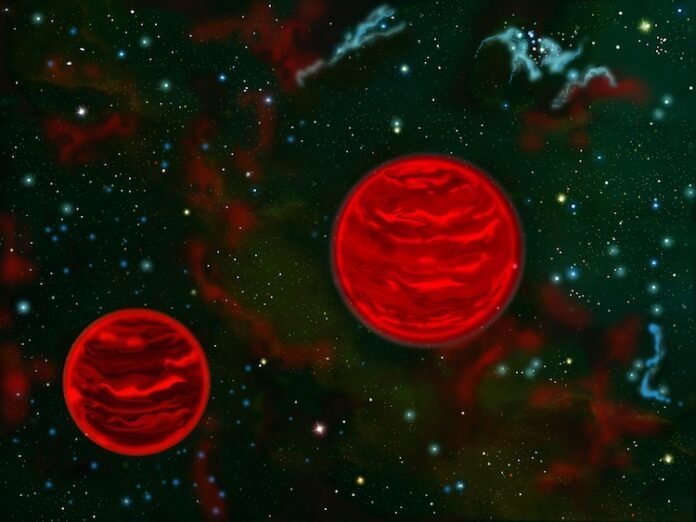The dividing line between stars and planets is that stars have enough mass to fuse hydrogen into helium to produce their own light, while planets aren’t massive enough to produce core fusion. It’s generally a good way to divide them, except for brown dwarfs. These are bodies with a mass of about 15–80 Jupiters, so they are large enough to fuse deuterium but can’t generate helium. Another way to distinguish planets and stars is how they form. Stars form by the gravitational collapse of gas and dust within a molecular cloud, which allows them to gather mass on a short cosmic timescale. Planets, on the other hand, form by the gradual accumulation of gas and dust within the accretion disk of a young star. But again, that line becomes fuzzy for brown dwarfs.
The problem arises in that, if brown dwarfs form within a molecular cloud like stars, they aren’t massive enough to form quickly. If a cloud of gas and dust has enough mass to collapse under its own weight, it has enough mass to form a full star. But if brown dwarfs form like planets, they would have to accumulate mass incredibly quickly. Simulations of planet formation show it is difficult for a planet to form with a mass of more than a few Jupiters. So what gives? The answer may lie in what are known as Jupiter-mass binary objects, or JuMBOs.

JuMBOs are binary objects where each component has a mass between 0.7 and 13 Jupiter masses. If they form like planets, they should be extremely rare, and if they form like binary stars, they should have more mass. Recent observations by the JWST of the Orion nebula cluster discovered 540 free-floating Jupiter mass objects, so-called rogue planets. This was surprising in and of itself, but more surprising was the fact that 42 of them were JuMBOs. Far from being rare, they make up nearly 8% of these rogue objects. So how do they form?
One clue lies in their orbital separation. The components of JuMBOs are most commonly separated by a distance of 28–384 AU. This is similar to that of binary stars with components around the mass of the Sun, which typically are in a range of 50–300 AU. Binary stars are extremely common. More common than single stars like the Sun. The environment of stellar nurseries, such as the Orion nebula, is also extremely intense. Massive stars that form first can blast nearby regions with ionizing radiation. Given how common JuMBOs are, it is likely they began as binary stars, only to have much of their masses blasted away by photo-erosion. Rather than being binary planets, they are the failed remnants of binary stars.
This could also explain why so many rogue planets have super-Jupiter masses. The same intense light that would cause photo-erosion would also tend to push them out of star systems.
Reference: Diamond, Jessica L., and Richard J. Parker. “Formation of Jupiter-Mass Binary Objects through photoerosion of fragmenting cores.” The Astrophysical Journal 975.2 (2024): 204.


